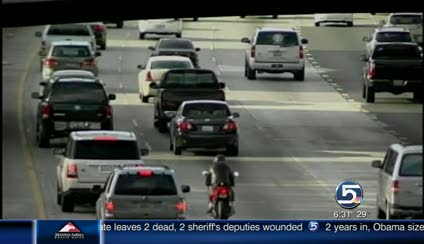Estimated read time: 3-4 minutes
This archived news story is available only for your personal, non-commercial use. Information in the story may be outdated or superseded by additional information. Reading or replaying the story in its archived form does not constitute a republication of the story.
SALT LAKE CITY -- Teenagers are not only a threat to themselves on the roads but impose a tremendous amount of risk to other drivers, as more than half a million people are involved annually in crashes where a teen is behind the wheel.
Traffic accidents remain the leading cause of death among teens in the U.S. and teenagers on average cause four times more fatal accidents than adult drivers, according to a report released Monday by researchers at The Children's Hospital of Philadelphia and State Farm Insurance Companies.
- Total deaths: 4,358
- Fatal crashes: 4,026
- Teens behind the wheel: 1,781
- Deaths to teens behind the wheel and their passengers: 3,118
- Deaths to others on the road: 1,240
The report is relatively groundbreaking in that there are various federal statistics out there. This takes the numbers from all those different sources and compiles them into a study that will hopefully allow policymakers to better determine progress.
"Every 35 minutes a teen crashes in Utah," Utah Highway Patrol trooper Todd Johnson said, adding that teens just don't have the experience to deal with all that driving entails without having to take extra precautions.
UHP representatives try to visit as many high schools as they can to talk to teenagers about safe driving.
"It's kind of sobering when you present it right -- that they could die as quickly as seven-tenths of a second on the freeway, traveling at freeway speeds," Johnson said. "We let them know the real possibilities."
Data suggest that 51 percent of teens age 15 to 19 who died behind the wheel in car accidents were speeding. More than 30 percent were reported to have been drinking and 56 percent were not wearing seat belts, according to the report. Sixty-five percent of the passengers who died in vehicles with teen drivers during 2008 were also not wearing seat belts.
The report also shows that more teens die from car crashes than from cancer, homicide and suicide combined, with car accidents accounting for 24 percent of all teen deaths. And researchers believe it is largely due to inexperience -- which is preventable.
"When most people think about those affected by teen driver crashes, they think of the teens behind the wheel. We must also consider the impact of these crashes on other members of our communities: occupants of other vehicles, pedestrians, cyclists and other road-users," said Dennis Durbin, co-author of the report and co-director of the hospital's Center for Injury Research and Prevention. "Whether we have a teen driver in our family or not, we should all care about this issue."
- 51% of teens age 15 to 19 who died behind the wheel in car accidents were speeding.
- More than 30% were reported to have been drinking
- 56% were not wearing seat belts
- 65% of passengers who died in vehicles with teen drivers during 2008 were not wearing seat belts
Durbin said the report -- which focuses on four key driving behaviors among teens, including failure to use seat belts, speeding, alcohol and drug use, and distracted driving -- is a way to measure the effectiveness of laws, education and other programs in reducing teen crashes and their impact on communities.
"The sheer magnitude of the number of people involved in teen driver crashes is much larger than I think most of us had appreciated," Durbin said.
State Farm Vice President Susan Hood said she hopes the report "is the next step in supporting continued improvements that will help keep teen drivers safe and those who share the road with them."
The federal government has expanded its Healthy People 2020 initiative, which includes teen driving goals. It includes a 10 percent drop in the fatality rate and a 10 percent bump in seat belt use. Monday's report is expected to help monitor those goals over the years.
"They aren't being rebellious," Johnson said. "They just haven't made it a habit yet to buckle up." He said seat belt use is up in Utah, but still lingers around 70 percent among teens.
------
Story compiled with contributions from Wendy Leonard and Andrew Adams.









